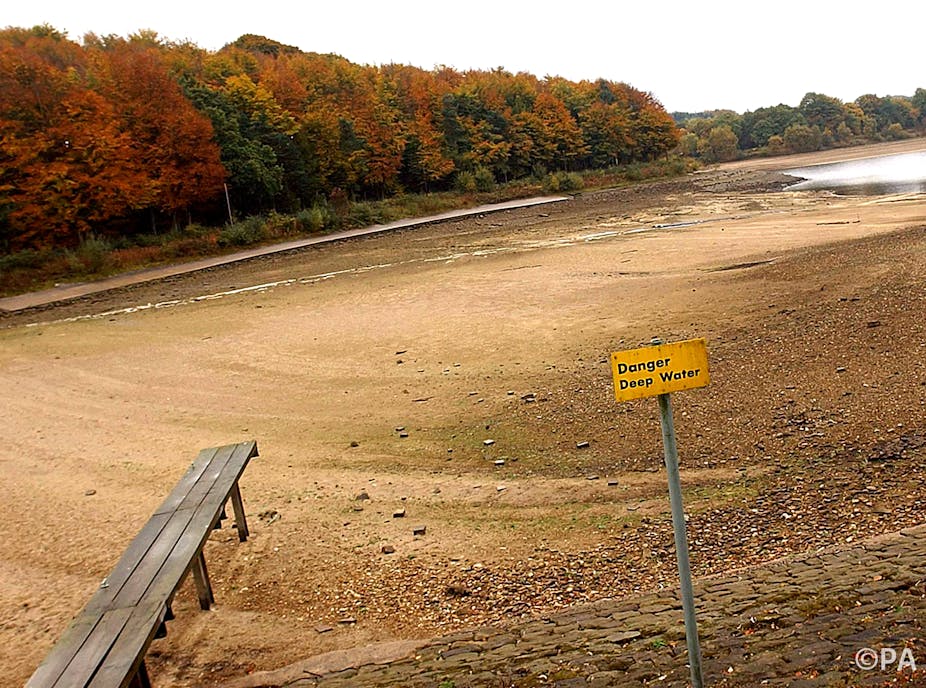The drilling and hydraulic fracturing (fracking) of wells for oil or gas is a well-established technique and requires large quantities of water. During the initial drilling of the well, water is needed for drilling fluids to maintain pressure, cool the drilling head, and remove drill cuttings. A further volume of water is then needed to frack each well.
These large amounts of water, anywhere between 7 and 38 million litres (7,000-38,000m3 ), are typically obtained from nearby surface waters such as rivers or lakes or pumped from groundwater. The environment local to the well would determine where the water is sourced, but once used it is not returned directly to the environment as it is contaminated with chemicals and sediments from the fracking process.
In areas of the world that are short of water, the sheer volume of water consumed during hydraulic fracturing could make shale gas production costly and unsustainable. Using scarce water supplies could lead to potentially serious affects on local communities, agriculture and ecosystems, as appears to be the case in Texas.
How much water is needed varies greatly, and depends on the depth of the well, the length of horizontal drill, the number of fracking stages and the geology. Estimates of typical water use for shale exploitation provided by the industry in the US for some of the major shale gas fields are shown in the table below (figures drawn from the EPA and Cuadrilla). A value is also shown for the Cuadrilla well on the Bowland Shale at Preese Hall near Blackpool, Lancashire (but bear in mind that this lower figure comes from a single exploratory well that has not been repeatedly fracked for commercial production).

So what would be the impact on water supplies in Britain if substantial commercial shale gas drilling got underway? We don’t yet know how rapidly the industry could expand but assuming they could drill 100 wells a year, and using the range of values taken from experience in the US as a guide, the water demand would be between 1.5-2.4 million m3 a year.
Compared to, for example, the licensed annual water abstraction in England and Wales of 12,600 million m3, this is small beer. But it needs to be seen in the context of how much water is needed and available across different areas of the country. In many parts of the south and east of England, water resources are already stressed due to over-abstraction from reservoirs and underground aquifers. Just how vulnerable water resources can be to drought can be seen by the imposition of so-called “hose-pipe bans”, most recently the widespread water use restrictions in the (ironically, very wet) summer of 2012.
In the UK, water abstraction is regulated. If no controls on water use were in place, substantial commercial fracking would have a detrimental impact on groundwater and surface water levels, and stream flow rate. Because drillers would need to draw this water in a relatively short period of time to use while drilling, the rapid extraction of water during periods of low stream flow rate could affect fish and other aquatic life due to the waters’ increased temperature and low oxygen concentration. Public water supply and water for agriculture could also be affected.
Of course, if drillers set up better practices for recycling and re-using fracking fluids the demand on water supplies would be lessened. Potentially even seawater could be used for coastal sites. The industry has responsibility for its wastewater which would normally be treated to prevent any detrimental effect on the environment.
The current increase in climate variability, with drier winters and summers, is putting stress on water resources. But the regulatory framework in the UK is very different from that in the US during their development of shale gas. Many government bodies, such as DECC and Defra have responsibility for regulating shale gas exploration. The Environment Agency, and the equivalent agencies in Scotland, Wales and Northern Ireland, regulate water abstraction by granting licences to draw water, and permits to discharge wastewater to protect our rivers, lakes, and aquifers.
Uncontrolled development and rapid expansion of shale oil and gas drilling would lead to pressure on water supply in some parts of the country. Drillers, regulators and water companies will have to work together to ensure that this nascent industry develops in a way that does not lead to unacceptable shortages. Drawing water would only be allowed where it is deemed sustainable and balanced with human and environmental needs. But further droughts in the UK will undoubtedly represent another challenge that any UK shale gas industry must meet.

